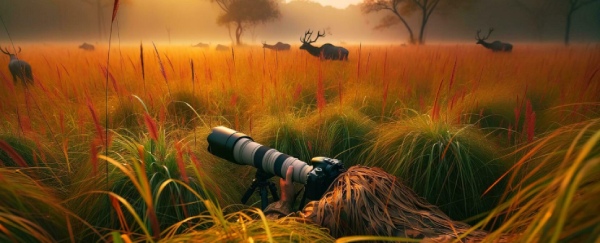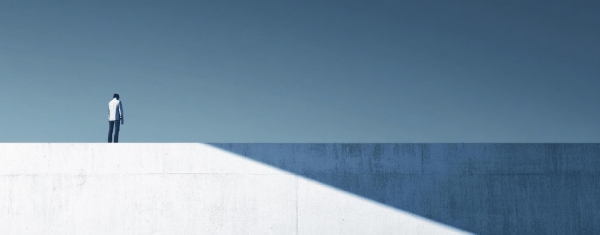Photo contests are a fantastic way for photographers to challenge themselves, gain recognition, and even earn prizes. But with so many contests out there, there are hundreds or even thousands of submissions to compete with, and standing out can become a problem for even the best entrant. One way to ensuring that your photos have a stronger chance of getting noticed is picking the right theme. Here is a guide on strategic tips for choosing themes that cater to contest requirements while granting you an advantage.
Why Theme Matters
Choosing a strong photo theme can make or break your contest submission. It is more than picking something that just sounds interesting-the finest themes are often those under which you may showcase your creativity, technicality, or storytelling. While the themes may be far afield of one another or confined to niches, in any case, they provide the chance to demonstrate your strengths.
When a photo contest theme is announced, it is the first mean of filtration for the judges. Themes help the judges to view submissions faster. The appropriate theme shows how well you can follow instructions and yet provide space for your creativity. Contestants that select themes unique enough to stand on their own yet relatable will get noticed and make an impression.
Important Considerations
Before entering the composition of an individual theme, some considerations about theme selection may prove helpful:
- Contest Rules and Criteria: Ensure that the theme you set for your contest is relaxed enough to accommodate the rules of the given competition. Some contests do have very stringent rules regarding what they consider acceptable.
- Personal Style and Comfort: Pick themes you feel comfortable working with. A theme that is outside of your comfort zone can be painfully stimulating for your creative self, so make certain that you can pull it technically.
- Available Resources: What do you have access to-a location, a model, equipment? Some themes require a lot of work or budget, but pick those that fit well with what is immediately available.
Popular Themes for Photo Contests
While every contest is different, certain themes tend to appear more frequently than others. Let’s take a look at some of the more common themes and the ways in which you might tackle them.
Nature and Wildlife

Nature and wildlife images have perpetual appeal as they often express beauty, calm, or raw power. Yet, the competition is so fierce that one must necessarily think outside the box. Tips for Nature Shooting:
- Think of Distinct Perspectives: Instead of the conventional "wide landscape," attempt an unusual angle or special lighting on your subject. Macro shots of insects, close-ups of flowers, or time-lapses can ensure your image stands out.
- Capturing Change in Nature: Think about environmental change or climate change impact as subjects. This will give an emotion that the judges might look in favour of.
Portraits and Human Emotions
The art of portraiture has forever been the most classic choice in photo contests: whether capturing the raw emotion of a person or celebrating the existing cultures with all their faces and expressions, a great portrait spells a story that strikes deep with the judges. Tips for Portraiture:
- Great moments of emotional connection are ones full of honestly perceived joy, contemplation, and surprise. To be honest, an unscripted expression is much more noticeable than a prepared one.
- Tell a Story: A portrait can actually convey more than just a face; it can somewhat tell a story. Through some details in its background, article of clothing, or even the relation of one figure to another, it is never an empty face that should be focused on.
The Abstract

Abstract photography is all about shapes, colors, and patterns rather than subjects that are recognizable. It is a perfect topic for someone who wants to experiment with composition and color and thereby stretch the dimensions of visual art. Abstract Tips:
- Patterns and Geometry: Look for lines, shapes, and repetition. Architecture, reflections, or even plain everyday objects can be abstracted through the right viewpoint.
- Play with light and shadows: Create depth and mystery by casting interesting shadows or using peculiar lighting setups for your abstract shots.
Urban Life and Architecture
This theme covers everything flowing through the very veins of a city-the bustling streets, towering skyscrapers, or maybe even the secret corners hidden away from the world. It suits anyone fascinated with the dichotomy between human-made structures and the people who delve among them. Tips for Shooting Urban Life:
- Feel the Energy: Most of the time, city life is fast-paced, so find ways to translate the movement to the image. Long exposures can turn car lights to bright streaks, or pictures of crowds can echo the buzz of an environment.
- Architectural Details: Rather than wide shots of the cityscape, focus on the finer details of the building or particular angles that highlight the design of the structure.
Minimalism

Minimalism is simplicity itself, with only a handful of key elements in the frame. It's a genre that suits those who enjoy clean, uncluttered compositions. Minimalism Photography Tips:
- Keep It Simple: Concentrate on a single subject, using negative space to convey solitude. Keep distraction levels to the minimum.
- Try Contrasts: Minimalistic compositions often shine when strong contrasts between light and shadow or colors are played within. Consider high-key or low-key lighting to draw more attention to the object.
Street Photography

Street photography accounts for capturing the raw, genuine moments of everyday life. Often spontaneous in nature, it portray life's unpredictability. Tips on Street Photography:
- Being Candid: Never focus on posed shots. Look for those natural moments in public spaces where all sorts of human interaction and city's randomness are played out.
- Look for the Story: Every street scene signals a story. Whether it is a child at play, a person deep in thought, or an unusual encounter, these moments that speak to larger meanings.
Black and white photography bestows the powerful capability to bring the attention on contrast, texture, and emotion. This type of photograph strips away all distractions for the viewer, compelling him or her to pay attention to the pure subjective elements of the image. Tips for Shooting Black and White:
- Emphasize Contrast: High-contrast images tend to do well in black-and-white photography. Look for scenes with strong shadows and bright highlights.
- Capture Texture and Detail: Textures are the domain of black and-white photography. Consider landscapes or portraits with lots of rich details you can almost touch.
Tweaking Your Theme for That Extra Attention
While these popular themes offer a great base, here are ways to tweak your submission to make it stand out:
Zoom in on a Sub-theme
Instead of aiming for a broad theme like "nature" or "portrait," try going narrower. Under the nature theme you could do "urban nature" or "nature at night." This will add a little bit of spice to your work rubber stamping.
Combine Multiple Themes
Some of the finest submissions are those that put together the various themes. For example, an image of a busy nighttime street would mix street photography, minimalism, and light experiments. Mix styles, and your work will have multiple layers of meaning and visual appeal.
Give It an Element of Storytelling
A really good picture tells a story. Whether through the people in your photograph, the settings, or the actions within the frame, giving your shot some narrative quality will always push your submission to another level. Images that make judges think or feel something tend to be most appreciated.
Nail Your Photo Contest Submission with Winning Themes
Choosing the right theme is one of the most critical steps in putting together a submission for a photo competition. Working painstakingly with themes that fit well with your strengths while leaving an opening for some creativity will help you make a dazzling submission. Whether your theme is nature, portrait, or something a bit more abstract, the main thing is that you approach the theme in a way that lets your technical skills shine through and tell a story that resonates with the judges. In the end, great themes are those that allow the function of your own, variable interpretation to shine through and, thus, leave a lasting impression on the judges.
